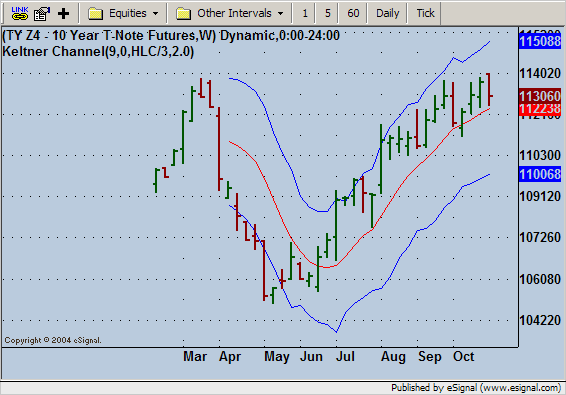I need help with matching up the standard Keltner Bands (Keltner.efs) in eSignal to those produced in the Ensign charting software. Within Ensign, you have the ability to introduce a multiplier - something not available in the standard eSignal study. The exact parameters that I'm seeking to match are:
Multiplier of 2
Ave (period) of 9
Thanks!!!
Multiplier of 2
Ave (period) of 9
Thanks!!!



Comment